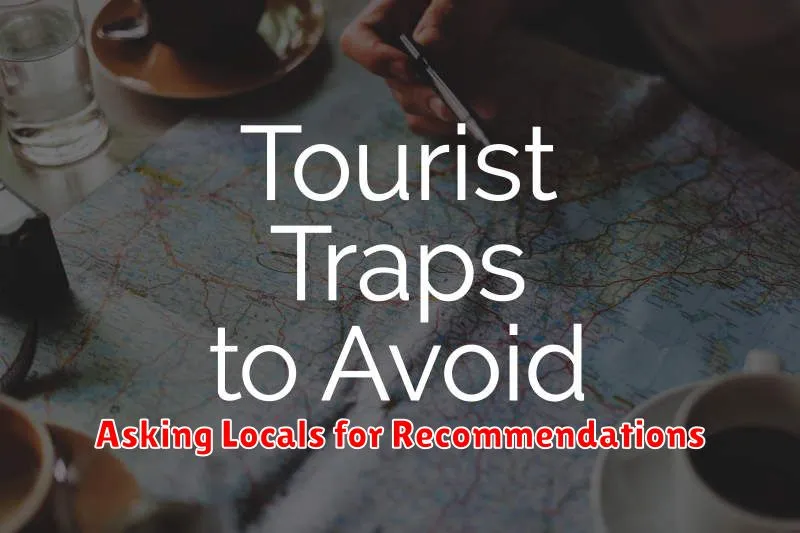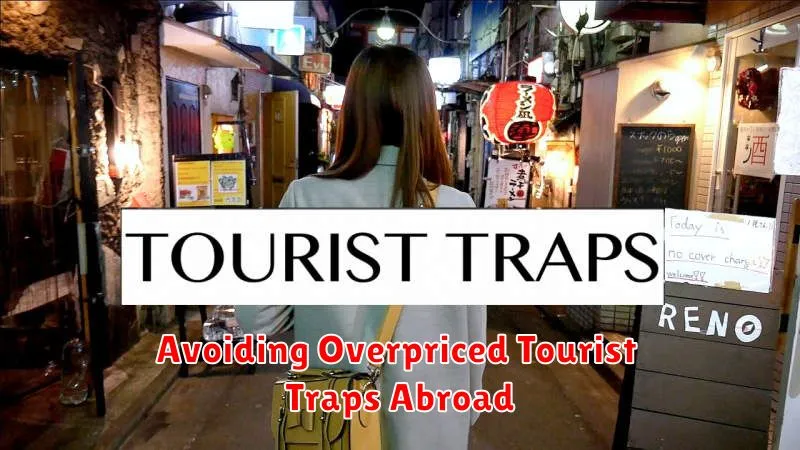Traveling abroad is an enriching experience, offering opportunities for cultural immersion, historical exploration, and stunning scenery. However, navigating unfamiliar territories can sometimes lead to encountering overpriced tourist traps. These inflated prices for common goods and services can significantly impact your travel budget, leaving you with less to spend on genuine cultural experiences. Learning how to identify and avoid tourist traps is essential to making the most of your travel funds and ensuring a more authentic and fulfilling journey. This article will provide you with practical tips and strategies to steer clear of these expensive pitfalls and enjoy a more budget-friendly adventure.
From inflated souvenir prices to exorbitant restaurant bills, tourist traps are designed to capitalize on unsuspecting visitors. Avoiding these traps requires a proactive approach, utilizing research and planning. By understanding common tactics employed at these locations and knowing how to identify them, you can save money and ensure a more authentic travel experience. This article explores effective strategies for identifying overpriced tourist traps abroad, allowing you to confidently navigate new environments and embrace the true essence of your chosen destination without breaking the bank.
What Is a Tourist Trap?
A tourist trap is a place, business, or attraction that is specifically designed to attract large numbers of tourists. Often, these locations offer overpriced goods and services, exploiting visitors’ unfamiliarity with local prices. They often leverage a location’s popularity or historical significance, but may lack authenticity or offer an inferior experience compared to lesser-known alternatives.
Key characteristics of a tourist trap include inflated prices, aggressive sales tactics, crowded conditions, and a focus on superficial experiences rather than genuine cultural exchange.
Common Red Flags in Tourist Areas
Being aware of common red flags can help you avoid overpriced tourist traps. Excessively pushy vendors are a major warning sign. If someone is overly eager to get you into their shop or onto their tour, be wary.
Menus without prices, or with only pictures, often indicate inflated costs tailored to unsuspecting tourists. Generic souvenirs lacking local craftsmanship and sold everywhere also suggest a tourist trap.
Areas devoid of locals and filled only with tourists can also be a red flag. If you notice these signs, it’s best to proceed with caution or look for alternatives.
Researching Local Prices in Advance
One of the most effective ways to avoid inflated tourist prices is to research local prices before you arrive. Knowing the average cost of everyday items like meals, transportation, and souvenirs empowers you to recognize and avoid price gouging.
Utilize online resources such as travel forums and city guides to gather information on typical costs. Comparing prices across multiple sources provides a realistic range to expect.
Asking Locals for Recommendations

One of the best ways to avoid overpriced tourist traps is to ask locals for recommendations. Hotel staff, shopkeepers, or even people you meet in a cafe can provide invaluable insights into authentic and affordable experiences.
Inquire about their favorite restaurants, markets, or attractions. Be specific in your questions, asking about places they frequent themselves, rather than where they send tourists. This will help you uncover hidden gems and enjoy a more genuine cultural experience, while saving money.
Using Maps to Identify Tourist Zones
Tourist maps, both physical and digital, often delineate key tourist areas. These highlighted zones typically concentrate attractions, restaurants, and shops, which can be indicators of inflated prices.
Cross-referencing these designated tourist zones with general city maps can be highly beneficial. Areas slightly outside the heavily marked tourist zones might offer similar experiences at more local, and potentially less expensive, prices.
Look for clusters of businesses offering the same services within these tourist zones. High concentrations of similar establishments often signify a focus on tourist traffic and a higher likelihood of inflated pricing.
Avoiding Forced Shopping Stops
Forced shopping stops are a common tactic used to inflate tour costs. These detours often involve high-pressure sales tactics and overpriced goods. Research your tour itinerary beforehand and be wary of unusually low prices, which may indicate the inclusion of forced shopping stops.
Communicate clearly with your tour operator about your unwillingness to participate in such activities. Choose reputable tour companies with transparent itineraries, or consider independent travel to maintain full control over your schedule and spending.
Finding Authentic Experiences
Venturing beyond the well-trodden tourist paths can lead to richer, more authentic experiences. Local markets offer a glimpse into everyday life and often have better prices than souvenir shops.
Consider taking public transportation to interact with locals and observe their routines. Dining at smaller, family-run restaurants will introduce you to genuine cuisine at a fraction of the cost of tourist-oriented establishments.
Engage with locals respectfully. Learning a few basic phrases in the local language can go a long way in fostering positive interactions and unlocking hidden gems.

